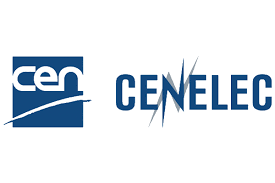Available Standards (3315)
Showing standards 2601 - 2800
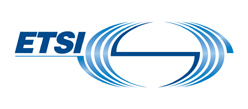
Operational energy Efficiency for Users (OEU); Energy Consumption Measurement of Operational Information Technology Servers
Energy Consumption Measurement of Operational Information Technology Servers

Operational energy Efficiency for Users (OEU); Energy Consumption Measurement of Operational Technical Equipment of Copper and Optical Fixed Access
Energy Consumption Measurement of Operational Technical Equipment of Copper and Optical Access

Operational energy Efficiency for Users (OEU); Global KPIs for ICT Sites
Major update of definition of Technical Global KPIs for ICT Sites, data centers included.

Operational energy Efficiency for Users (OEU); KPIs for Smart Cities
The deliverable will define indicators (KPI) for Smart Cities expressing city level in terms of People, Planet, Prosperity, Governance and Propagation

Operational energy Efficiency for Users (OEU); Referential specification to define sustainable levels of Fixed Broadband access networks
This document defines sustainable levels of operational fixed Broadband access networks

Operational energy Efficiency for Users (OEU); Referential specification to define sustainable levels of ICT Sites
Referential specification to define sustainable levels of Sustainable ICT Sites

Operational energy Efficiency for Users (OEU); Technical Global KPIs for Fixed Access Networks
Definition of Technical Global KPIs for fixed access networks

Operational energy Efficiency for Users (OEU); Waste management of ICT equipment
This document will define the general rules in order to manage the end of life of ICT equipment
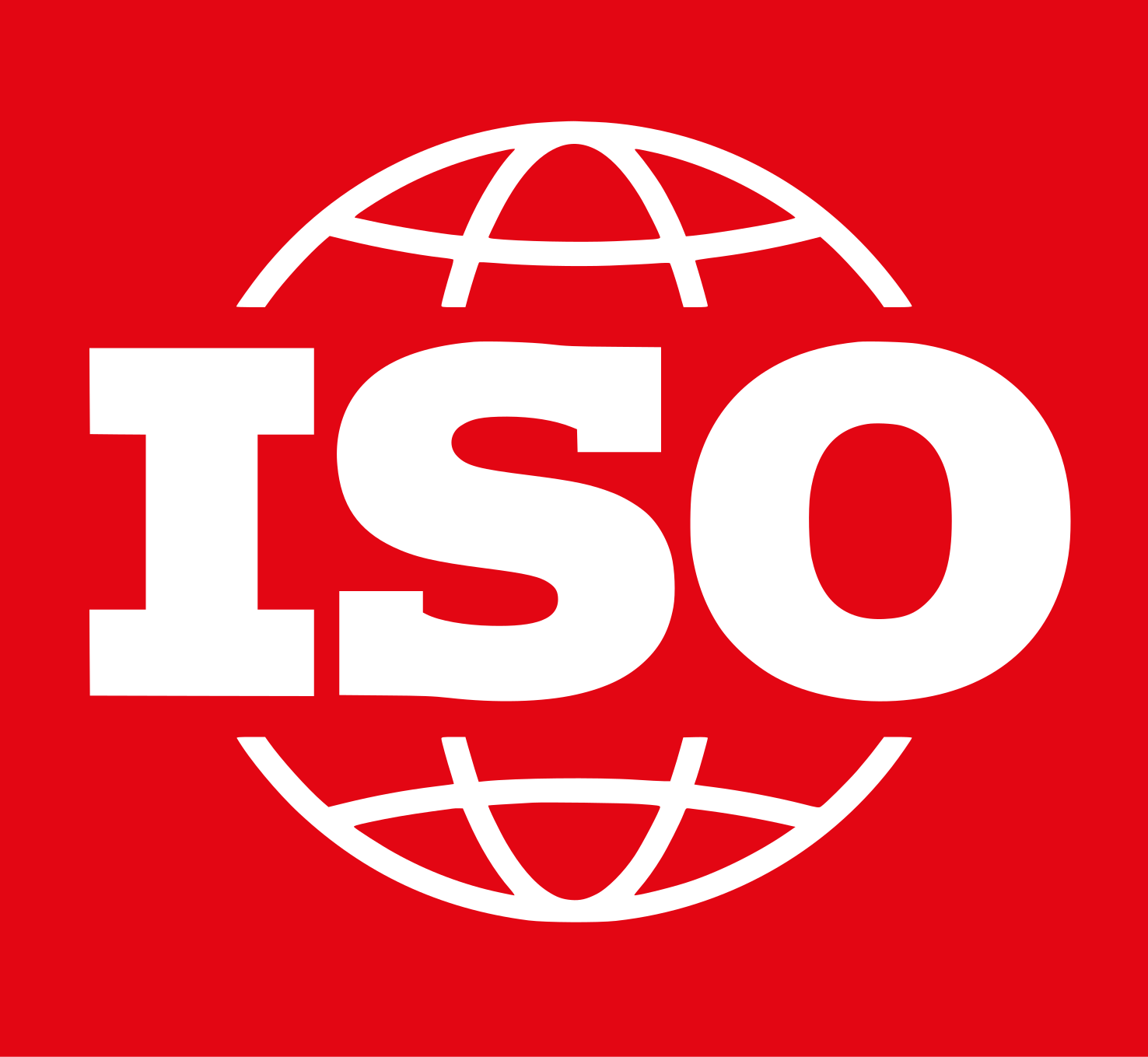
Organization and digitization of information about buildings and civil engineering works, including building information modelling (BIM) - Information management using building information modelling- Part 1: Concepts and principles (ISO 19650-1:2018)
This document outlines the concepts and principles for information management at a stage of maturity described as "building information modelling (BIM) according to the ISO 19650 series".
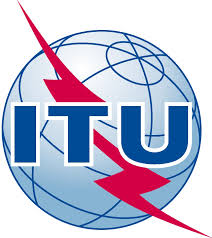
Overview of end-to-end cloud computing management
Recommendation ITU-T M.3070/Y.3521 presents the conceptual view and the common model of end-to-end (E2E) cloud computing management based on the service management interface (SMI) and cloud computi

Overview of Internet of Things
This recommendation provides an overview of the Internet of things (IoT).

P1913 - Software-Defined Quantum Communication
This standard defines the Software-Defined Quantum Communication (SDQC) protocol that enables configuration of quantum endpoints in a communication network in order to dynamically create, modify, o

P2302 Standard for Intercloud Interoperability and Federation (SIIF)
This standard defines topology, functions, and governance for cloud-to-cloud interoperability and federation.

P7130 - Standard for Quantum Technologies Definitions
This standard addresses quantum technologies specific terminology and establishes definitions necessary to facilitate clarity of understanding to enable compatibility and interoperability.

P7131 - Standard for Quantum Computing Performance Metrics & Performance Benchmarking
The standard covers quantum computing performance metrics for standardizing performance benchmarking of quantum computing hardware and software.

Packaging — Labelling and direct product marking with linear bar code and two-dimensional symbols
ISO 28219:2017
- defines minimum requirements for identifying items,
- provides guidelines for item marking with machine-readable symbols,

Peer DID Method Specification
A specification to allow blockchain-independent W3C Decentralized Identifiers.

Performance evaluation methods of mobile household robots
This standard applies to household robots and provides performance testing and evaluation method to common feature of various household robots.This standard is neither concerned with safety nor with p
Performance evaluation protocol for digital fitting systems - Part 1: Accuracy of virtual human body representation
This document is the first of a family of standards.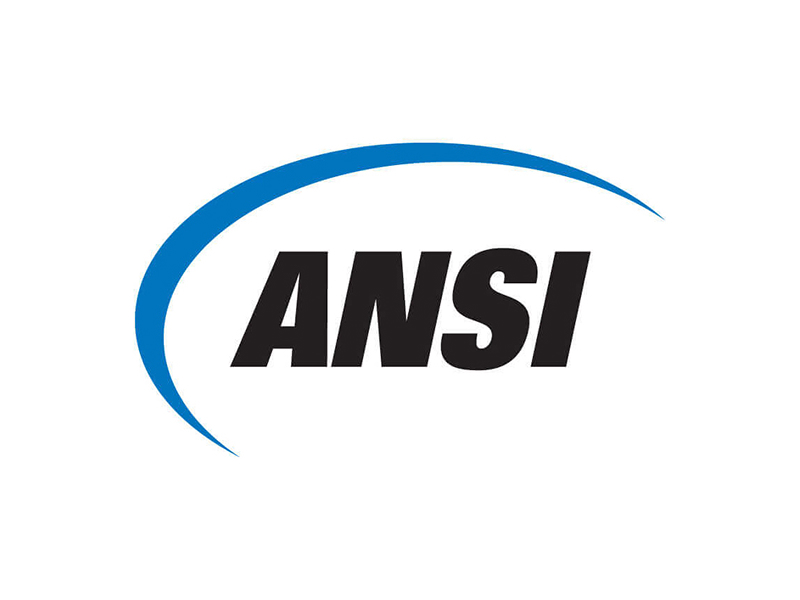
Performance Requirements for Risk Reduction Measures: Safeguarding and other Means of Reducing Risk
This standard provides performance requirements for the design, construction, installation, operation, and maintenance of the risk reduction measures listed below when applied to machines.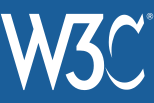
Permissions
The Permissions Standard defines common infrastructure for other specifications that need to interact with browser permissions.
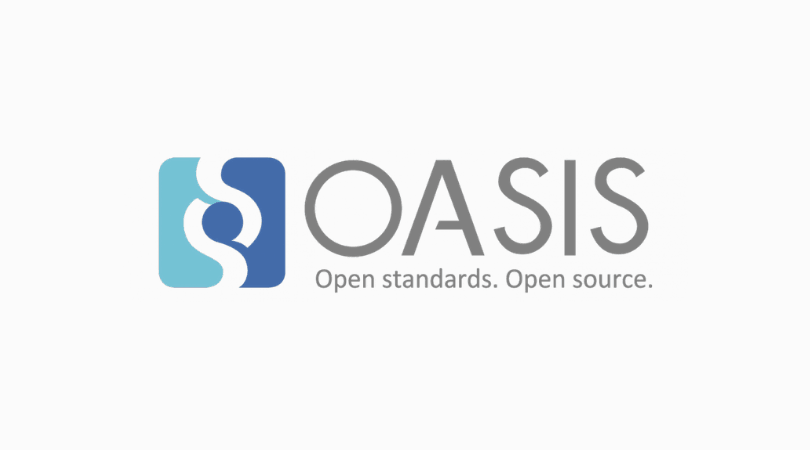
PKCS #11 Cryptographic Token Interface Base Specification Version 2.40
The OASIS PKCS 11 Technical Committee develops enhancements to improve the PKCS #11 standard for ease of use in code libraries, open source applications, wrappers, and enterprise/COTS products: imp

PKCS #11 Cryptographic Token Interface Current Mechanisms Specification Version 2.40
The OASIS PKCS 11 Technical Committee develops enhancements to improve the PKCS #11 standard for ease of use in code libraries, open source applications, wrappers, and enterprise/COTS products: imp

PKCS #11 Cryptographic Token Interface Historical Mechanisms Specification Version 2.40
The OASIS PKCS 11 Technical Committee develops enhancements to improve the PKCS #11 standard for ease of use in code libraries, open source applications, wrappers, and enterprise/COTS products: imp

PKCS #11 Cryptographic Token Interface Profiles Version 2.40
The OASIS PKCS 11 Technical Committee develops enhancements to improve the PKCS #11 standard for ease of use in code libraries, open source applications, wrappers, and enterprise/COTS products: imp
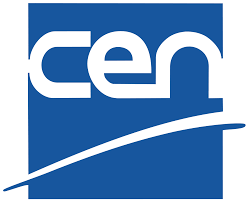
Planned EN for mandatory e-Submission and elective e-Ordering transactions
Planned EN for procurement transactions, generally compatible with TC/434 data elements, to implement (EU) 2019/1780 (2019)

Plant Ontology (PO)
The Plant Ontology is a structured vocabulary and database resource that links plant anatomy, morphology and growth and development to plant genomics data.

Plant Trait Ontology (TO)
An ontology that describes phenotypic traits in plants. Each trait is a distinguishable feature, characteristic, quality or phenotypic feature of a developing or mature plant.

Pointer Events Working Group
The mission of the Pointer Events Working Group is to provide methods to enable simple device independent input from pointing devices such as mouse, pen, and multi-touch screen.
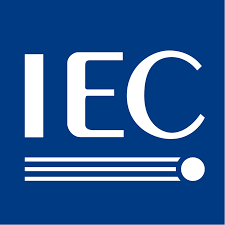
Power systems management and associated information exchange - Data and communications security - Part 9: Cyber security key management for power system equipment
IEC 62351-9:2017 specifies cryptographic key management, namely how to generate, distribute, revoke, and handle public-key certificates and cryptographic keys to
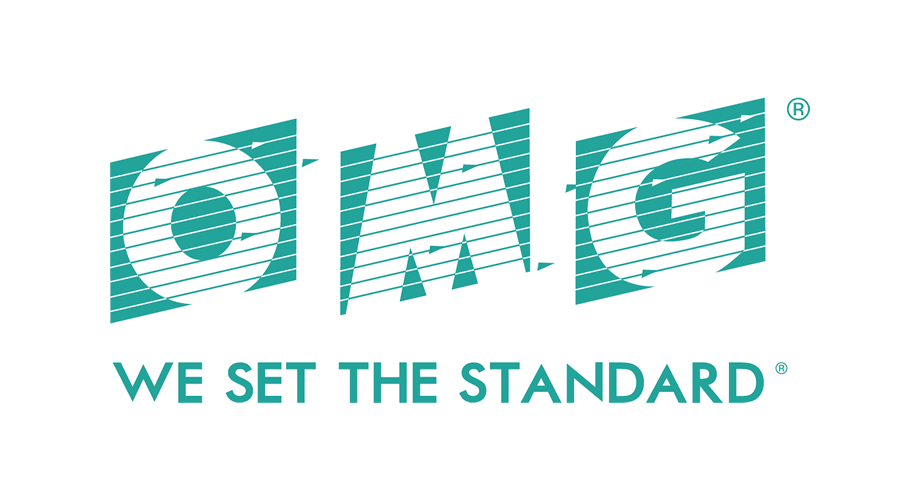
Practical Guide to Cloud Computing V3.0
The Practical Guide to Cloud Computing was written to help enterprise information technology (IT) and business decision makers adopt cloud computing to solve business challenges.

Practical Guide to Cloud Deployment Technologies
The objective of this guide is to define and position the cloud technologies that can be used to deploy cloud-based applications and services, and clarify how they differ in their implementation an

Practical Guide to Cloud Management Platforms
The Practical Guide to Cloud Management Platforms was written to help enterprise Information Technology (IT) managers, business decision makers, system operations staff, application architects and

Practical Guide to Cloud Service Agreements V3.0
The Practical Guide to Cloud Service Agreements was written to help enterprise information technology (IT) and business decision makers analyze cloud service agreements (CSAs) from different cloud

Practical Guide to Hybrid Cloud Computing
The Practical Guide to Hybrid Cloud Computing was written to help enterprise information technology (IT) managers, business decision makers, application architects and application developers unders

Practical Guide to Platform-as-a-Service
The Practical Guide to Platform-as-a-Service was written to help enterprise information technology (IT) managers, business decision makers, application architects and application developers underst

Presentation Exchange 2.X.X
Base protocol to exchange verifiable credentials between two parties.

Prime number generation
This International Standard specifies methods for generating and testing prime numbers as required in cryptographic protocols and algorithms.

Prime number generation
This International Standard specifies methods for generating and testing prime numbers as required in cryptographic protocols and algorithms.
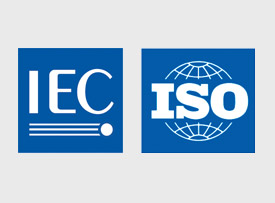
Privacy enhancing data de-identification terminology and classification of techniques
This document provides a description of privacy-enhancing data de-identification techniques, to be used to describe and design de-identification measures in accordance with the privacy principles in I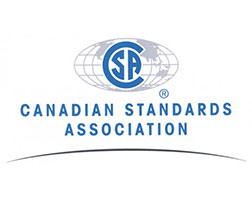
Privacy Level Agreement V2
Privacy Level Agreement - Version 2 is intended to be used as an appendix to a Cloud Services Agreement, and to describe the level of privacy protection that the CSP will provide.

Privacy Level Agreement Working Group
This working group aims at creating PLA templates that can be a powerful self-regulatory harmonization tool, which is almost impossible to achieve at global level using traditional legislative mean

Privacy protection - Privacy guidelines for smart cities
The document takes a multiple agency as well as a citizen-centric viewpoint. It provides guidance on:- smart city ecosystem privacy protection;

Privacy technologies - Consent record information structure
This document specifies an interoperable, open and extensible information structure for recording PII principals' consent to PII processing.
Processes, data elements and documents in commerce, industry and administration - Long term signature - Part 2: profiles for XML Advanced Electronic Signatures (XAdES)
This document specifies the elements, among those defined in XAdES digital signatures, that enable verification of a digital signature over a long period of time.

Processes, data elements and documents in commerce, industry and administration - Long term signature profiles - Part 1: Long term signature profiles for CMS Advanced Electronic Signatures (CAdES)
This document specifies the elements, among those defined in CMS digital signatures and CAdES digital signatures that enable verification of a digital signature over a long period of time.

Processes, data elements and documents in commerce, industry and administration - Long term signature profiles - Part 3: Long term signature profiles for PDF Advanced Electronic Signatures (PAdES)
ISO 14533-3:2017 specifies the elements, among those defined in PDF Advanced Electronic Signatures (PAdES), that enable verification of a digital signature over a long period of time.

Product category rules for life cycle assessment of electrical and electronic products and systems
This European Standard EN 50693 specifies the process and requirements on how to conduct life cycle assessment in the context of environmental declarations for electronic and electrical products an

Product Service System (PSS)
Ontology to enhance engineering of PSS in manufacturing, by modelling all the aspects that affect, or could affect a PSS

Professional Media Over Managed IP Networks: System Timing and Definitions
This family of engineering documents defines an extensible system of RTP-based essence streams referenced to a common reference
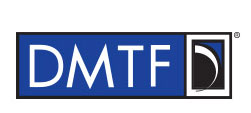
Profile to Enable Automated Deployment of OVF Packages 1.0.0
In order to promote the wide spread adoption of OVF it is important that software vendors have confidence in the ability to build an OVF that can be deployed on a set of target virtualization platf
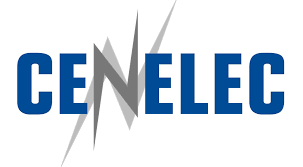
PROGRAMMABLE CONTROLLERS - PART 2: EQUIPMENT REQUIREMENTS AND TESTS
Specifies requirements and related tests for programmable controllers (PLCs) and their associated peripherals, which have as their intended use the control and command of machines and industrial proce
Programmable Traffic Monitoring Fabrics that enable On-Demand Monitoring and Feeding of Knowledge into the ETSI GANA Knowledge Plane for Autonomic Service Assurance of 5G Network Slices; and Orchestrated Service Monitoring in NFV/Clouds
This Technical White Paper No.3 is about Demo-3 (of a series of Demos planned for 2018/2019 an

Programming languages, their environments and system software interfaces
JTC 1/SC 22 is the international standardization subcommittee for programming languages, their environments and system software interfaces.

Programming languages, their environments and system software interfaces
JTC 1/SC 22 is the international standardization subcommittee for programming languages, their environments and system software interfaces.

Proof-of-concept for data service using information centric networking in IMT-2020
This Supplement specifies a proof-of-concept for a service that provides named data such as Internet of Things (IoT) named data by information centric networking in IMT-2020.

PROTECTION AGAINST ELECTRIC SHOCK - COMMON ASPECTS FOR INSTALLATION AND EQUIPMENT
Pertains to the protection of persons and livestock against electric shock.
Protocol for managing capability exposure APIs in IMT-2020 network
This Recommendation describes the protocol for managing capability exposure APIs in IMT2020 network. It includes signallin

Public Cloud Service Agreements: What to Expect and What to Negotiate V2.0
Public Cloud Service Agreements: What to Expect and What to Negotiate was written to help cloud customers understand and evaluate public cloud service agreements (CSAs) from different providers.

Public transport - Road vehicle scheduling and control systems - Part 7: System and network architecture
This document specifies the general rules for an on-board data communication system between the different systems that may be used within public transport vehicles, based

Publishing Working Group
The mission of the Publishing Working Group is to enable all publications—with all their specificities and traditions—to become first-class entities on the Web.
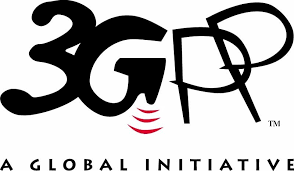
QoE parameters and metrics relevant to the Virtual Reality (VR) user experience
The present document provides a study on the QoE metrics relevant to VR service. The study focuses on:1. Defining a device reference model for VR QoE measurement points.

Quantification and communication of Carbon FootPRINT and GHG emission reductions/avoided emissions from electric and electronic products and systems – Principles, methodologies, requirements and guidance
This document of IEC 63372 describes principles and methodologies, specifies requirements and provides guidance on quantification and communication of Carbon footprint (sum of GHG emissions and rem

Quantum-safe Security
The CSA Quantum Safe Security Working Group's goal is to address key generation and transmission methods that will aid the industry in understanding quantum-safe methods for protecting their data t

Quick Start Guide: An Overview of ISA/IEC 62443 StandardsSecurity of Industrial Automationand Control Systems
This document is intended to provide the readerwith a detailed overview of the ISA/IEC 62443Series of standards and technical reports.
Radio meter data exchange
Prepare a standard for the lower layers for uni and bi-directional meters data exchange by radio frequency communication. (see resolutions 2& 3/1999).

radio regulatory technical advisory
The IEEE 802.18 Radio Regulatory Technical Advisory Group ("RR-TAG") supports the work of the IEEE 802 LMSC and the IEEE 802 wireless Working Groups - IEEE 802.11 (WLAN), IEEE 802.15 (WSN), IEEE 80

Random bit generation
This International Standard specifies a conceptual model for a random bit generator for cryptographic purposes, together with the elements of this model.
This International Standard

Random bit generation
This International Standard specifies a conceptual model for a random bit generator for cryptographic purposes, together with the elements of this model.
This International Standard

Rationalized structure for electronic signature standardization - Best practices for SMEs
This Technical Report aims to be the entry point in relation to electronic signatures for any SME that is considering to dematerialize paper-based workflow(s) and seeks a sound legal and technical

Rationalized structure for electronic signature standardization - Guidelines for citizens
This Technical Report aims to help citizens to understand the relevance of using electronic signature within their day-to-day lives.

Real Estate Core Ontology
This DTDL ontology is implemented based on the domain ontology RealEstateCore. RealEstateCore is a common language used to model and control buildings, simplifying the development of new services.

Receicled Material Standard
GreenBlue’s Recycled Material Standard (RMS) is a voluntary, market-based framework that

Recommendation on Requirements and Architectural Framework for Autonomic Management and Control of IMT-2020 Networks
Requirements and Architectural Framework for Autonomic Management and Control of IMT-2020 Networks, as part of the the paradigm of Autonomic/Autonomous Networking (ANs) for Networks that exhibit featu
Recommended Practice for Assessing the Impact of Autonomous and Intelligent Systems on Human Well-Being
The impact of artificial intelligence or autonomous and intelligent systems (A/IS) on humans is measured by this standard.
Recommended Practice for E-Invoice Business Using Blockchain Technology
Described in this standard is the blockchain-based application reference architecture of e-invoice business, including roles of participants, typical business scenarios, platform frameworks, and secur
Recommended Practice for Environmental Social Governance (ESG) and Social Development Goal (SDG) Action Implementation and Advancing Corporate Social Responsibility
This recommended practice provides recommendations for next steps in the application of IEEE Std 7010, applied to meeting Environmental Social Governance (ESG) and Social Development Goal (SDG) initia
Recommended Practice for Ethical Assessment of Extended Reality (XR) Technologies
This standard establishes a uniform set of definitions, and a methodology to assess the socio-technical considerations and practices regarding (“XR”) Extended Reality (Augmented Reality, Virtual Reali
Recommended Practice for Ethically Aligned Design of Artificial Intelligence (AI) in Adaptive Instructional Systems
This recommended practice describes ethical considerations and recommended best practices in the design of artificial intelligence as used by adaptive instructional systems.
Recommended Practice for Human-Robot Interaction Design of Human Subject Studies
This recommended practice outlines best practices and requirements for the development of designs of human-subject experiments in human-robot interaction research.
Recommended Practice for Organizational Governance of Artificial Intelligence
This recommended practice specifies governance criteria such as safety, transparency, accountability, responsibility and minimizing bias, and process steps for effective implementation, performance au
Recommended Practice for The Evaluation of Artificial Intelligence (AI) Dialogue System Capabilities
This recommended practice establishes an evaluation framework for the capabilities of artificial intelligence dialogue systems such as chatbots, consulting terminals, or operation interfaces.
Recommended Practices for Virtual Classroom Security, Privacy and Data Governance
This recommended practice produces best practices for meeting the requirements of IEEE P7004: Standard for Child and Student Data Governance, when designing, provisioning, configuring, operating, and
REFEC Feature/Study Item: 3GPP SA1 for Release 17
The goal of this SA1 work item is to develop Stage 1 normative service requirements for multi-hop relay by enhancing the work done for “Indirect 3GPP Communication” in TS 22.278.

Reference Architecture - Trusted Cloud Initiative
The Trusted Cloud Initiative helps cloud providers develop industry-recommended, secure and interoperable identity, access and compliance management configurations, and practices.

Reference architecture of artificial intelligence service exposure for smart sustainable cities
Recommendation ITU-T Y.4470 establishes artificial intelligence service exposure (AISE) for smart sustainable cities (SSCs), and provides the common characteristics and high-level requirements, ref

Referrer Policy
This document describes how an author can set a referrer policy for documents they create, and the impact of such a policy on the Referer HTTP header for outgoing requests and navigations.

Relationship with ISO 12100 — Part 4: Guidance to machinery manufacturers for consideration of related IT-security (cyber security) aspects.
This document gives machine manufacturers guidance on potential security aspects in relation to safety of machinery when putting a machine into service or placing on the market for the first time.

Representation of CIM in XML
CIM information could be represented within XML in many different ways.

Requirements and architectural framework for autonomic management and control of IMT-2020 networks
Recommendation ITU-T Y.3324 specifies the high-level and functional requirements and architecture of autonomic ma

Requirements and architecture for indoor conversational robot systems
Describes the requirements and architecture for an indoor conversational robot system. This Recommendation defines different functions to support indoor conversational robot systems.
Requirements and architectures of multimedia platform for digital human services using edge cloud
Media services by using digital human technology covers a wide range of application scenarios. Also, it involves a variety of key technologies, such as modeling, animation and rendering technologies.
Requirements and capability framework for IoT-based automotive emergency
response system
The objective of Recommendation ITU-T Y.4119 is to identify requirements of an Internet of things (IoT)-based automotive emergency response system (AERS) for aftermarket devices and to provide a ca

Requirements and common characteristics of IoT identifier for IoT service
The objective of this Recommendation is to analyse identifiers in existing technologies and networks for IoT service, and describe the requirements of IoT identi

Requirements and evaluation methods of digital human platform
Under the stimulation of the concept of the metaverse, digital human is accelerating from technological innovation to industrial application.
Requirements and evaluation methods of non-interactive 2D real-person digital human application systems
Recommendation ITU-T F.748.14 specifies requirements and evaluation methods for non-interactive two-dimensional (2D) real-person digital human application systems, in terms of image, voice, movement,
Requirements and functional model for a ubiquitous network robot platform that supports ubiquitous sensor network applications and services
Defines a ubiquitous network robot platform, and to identify its requirements and functional model.
Requirements and reference framework for cloud virtual reality systems
Cloud virtual reality based on cloud capabilities, can effectively shield terminal differences, reduce the difficulty of application development, lower some specific industry entry barriers, and promo
Requirements for a cloud computing platform supporting a visual surveillance system
Recommendation ITU-T F.743.8 specifies the requirements for a cloud computing platform supporting visual surveillance.

Requirements for a real-time interactive multimedia service under poor network conditions
This recommendation describes the scenarios, general framework, and requirements for a real-time interactive multimedia service (RIMS) under poor network conditions.
Requirements for big data-enhanced visual surveillance services
Recommendation ITU-T F.743.7 specifies requirements for visual surveillance enhanced by big data (VSBD) services.

Requirements for Cloud Service Management in Cloud-Integrated Telecom BSS/OSS
Draft M.rcsm: Requirements for Cloud Service Management in Cloud-Integrated Telecom BSS/OSS

Requirements for cloud storage in visual surveillance
Recommendation ITU-T F.743.2 defines the cloud storage service requirements in visual surveillance.
Requirements for desktop as a service
As one of cloud computing service categories, desktop as a service (DaaS) provides cloud service customers with desktop functions remotely delivered by cloud service providers.

Requirements for interoperation of the smart port with the smart city
Recommendation ITU-T Y.4209 addresses the interoperation of the smart port with the smart city, identifying the requirements for the smart port platform to be able to interoperate with smart city p

Requirements for machine learning– based quality of service assurance for the IMT -2020 Network
Recommendation ITU-T Y.3170 specifies requirements for machine learning-based quality of service (QoS) assurance for the International Mobile Telecommunications 2020 (IMT

Requirements for media processing services
This recommendation identifies the functional requirements for the media processing services.
Requirements for resource management in cloud-aware telecommunication management systems
Recommendation ITU-T M.3372 introduces a functional framework and functional requirements for resource management in cloud-aware telecommunication management systems.

Requirements for service management in cloud-aware telecommunication management system
Recommendation ITU-T M.3371 defines the general and functional management requirements that support service management in a cloud-aware telecommunication management system (see Recommendation ITU-T

Requirements of communication services for digital human
This recommendation describes the concept, use cases and requirements of communication services for digital human. The scope of this recommendation includes:
Requirements to connect, access, participate and further develop open global networks and systems, for postal operators and the wider postal sector players
The scope will be defined during the preliminary stage

Road vehicles — Cybersecurity engineering
This document specifies engineering requirements for cybersecurity risk management regarding concept, product development, production, operation, maintenance and

Road vehicles — Functional safety — Part 1: Vocabulary
This document is intended to be applied to safety-related systems that include one or more electrical and/or electronic (E/E) systems and that are installed in s

Robot Task Representation
This standard defines an ontology that allows for the representation of, reasoning about, and communication of task knowledge in the robotics and automation domain.
Robotic Services Ontology
The purpose of the Robotics Domain Task Force is to foster the integration of robotics systems from modular components through the adoption of OMG standards.
Robotics — Application of ISO 13482 — Part 1: Safety-related test methods
This document describes methods that can be used to test personal care robots in terms of safety requirements defined in ISO 13482.
Robotics — Application of ISO 13482 — Part 2: Application guidelines
This document provides guidance on the use of ISO 13482 and is intended to facilitate the design of personal care robots in conformity with ISO 13482.
Robotics — Application services provided by service robots — Safety management systems requirements
This document specifies the requirements of safety management systems for application services provided by service robots (application service safety management system (hereafter AsSMS)) that an appli
Robotics — Modularity for service robots — Part 1: General requirements
This document presents requirements and guidelines on the specification of modular frameworks, on open modular design and on the integration of modules for realising service robots in various environm
Robotics — Modularity for service robots — Part 201: Common information model for modules
This standard complies with the ISO 22166 family of standards providing requirements and guidelines on specifications on modularity for service robots.
Robotics — Modularity for service robots — Part 202: Information model for software modules
This document complies with the ISO 22166-1 and CD 22166-201 family standards providing requirements and guidelines on specifications on modularity for service robots; in this context the document pre
Robotics — Performance criteria and related test methods for service robots — Part 1: Locomotion for wheeled robots
ISO 18646-1:2016 describes methods for specifying and evaluating the locomotion performance of wheeled robots in indoor environments.
Robotics — Performance criteria and related test methods for service robots — Part 2: Navigation
This document describes methods of specifying and evaluating the navigation performance of mobile service robots.
Robotics — Performance criteria and related test methods for service robots — Part 3: Manipulation
This document describes methods of specifying and evaluating the manipulation performance of service robots, notably:— grasp size. — grasp strength. — grasp slip resistance.
Robotics — Performance criteria and related test methods for service robots — Part 4: Lower-back support robots
his document describes methods of specifying and evaluating the performance of lower-back support robots.This document applies regardless of the purpose and application of lower-back support robots an
Robotics — Safety design for industrial robot systems — Part 1: End-effectors
This document provides guidance on safety measures for the design and integration of end-effectors used for robot systems.
Robotics — Safety design for industrial robot systems — Part 2: Manual load/unload stations
ISO/TR 20218-2:2017 is applicable to robot systems for manual load/unload applications in which a hazard zone is safeguarded by preventing access to it.
Robotics — Safety requirements — Part 2: Industrial robot systems, robot applications and robot cells
ISO Standard addresses the safety requirements addressing particular hazards that are presented by industrial robot systems when integrated and installed in industrial robot cells and lines.
Robotics — Test methods for Exoskeleton-type Walking RACA Robot
This document is to establish a test method for exoskeleton-type WALKING RACA ROBOT which is intended to move from one location to another, by making reciprocating motion having intermittent contact w
Robotics — Vocabulary
This document defines terms used in relation to robotics.
Robots and robotic devices - Safetyrequirements for industrial robots - Part2: Robot systems and integration
Harmonised to the EU Machinery Directive, this adopted ISO Standard addresses the safety requirements addressing particular hazards that are presented by industrial robot systems when integrated and i
Robots and robotic devices — Collaborative robots
ISO/TS 15066:2016 specifies safety requirements for collaborative industrial robot systems and the work environment, and supplements the requirements and guidance on collaborative industrial robot ope
Robots and robotic devices — Coordinate systems and motion nomenclatures
ISO 9787:2013 defines and specifies robot coordinate systems. It also provides nomenclature, including notations, for the basic robot motions.
Robots and robotic devices — Safety requirements for industrial robots — Part 1: Robots
ISO 10218-1:2011 specifies requirements and guidelines for the inherent safe design, protective measures and information for use of industrial robots.
Robots and robotic devices — Safety requirements for industrial robots — Part 2: Robot systems and integration
ISO 10218-2:2011 specifies safety requirements for the integration of industrial robots and industrial robot systems as defined in ISO 10218-1, and industrial robot cell(s).
Robots and robotic devices — Safety requirements for personal care robots
This International Standard has been developed in recognition of the particular hazards presented by newly emerging robots and robotic devices for new applications in non-industrial environments for p
Robots and robotic devices. Guide to the ethical design and application of robots and robotic systems
BS 8611 gives guidance on the identification of potential ethical harm and provides guidelines on safe design, protective measures, and information for the design and application of robots.
Robots for industrial environments — Automatic end effector exchange systems — Vocabulary
This document defines terms relevant to automatic end-effector exchange systems used as a part of robot systems in accordance with ISO 10218‑2.SA1 SP-180922
This 3GPP SA1 Study Item (SID) for Release 17 focuses on updating and improving existing requirements for asset tracking, covering a larger variety of use cases.
SA2 SP-181118
Cellular IoT support and evoluation for the 5G system (SP-18118) is a 3GPP completed work item (WID) for Release 16 as part of the stage 2 work (5G phase 2).
SA2 SP-181120
5GS Enhanced Support of Vertical and LAN Services (SP-181120) is a 3GPP completed work item (WID) for Release 16 as part of the stage 2 work (5G phase 2) under WG SA2 - architecture.
SA2 SP-181122
Enhancement of Ultra-Reliable Low-latency support in the 5G core (SP-181122) is a 3GPP completed work item (WID) for Release 16 as part of the stage 2 work (5G phase 2) under WG SA2 - architecture.

SA5 - Management, Orchestration and Charging
Within the 3GPP Technical Specification Group Service and System Aspects (TSG SA), the main objectives of 3GPP TSG SA WG5 (SA5) are Management, Orchestration and Ch

SA6 - Mission-critical applications
The responsibility of SA WG6 includes the following: definition, evolution and maintenance of Stage 2 technical specification(s) for application layer functional elements
SA6 SP-181136
This 3GPP SA6 study item (SID) for Release 16 is aimed at identifying the impacts on and the necessary changes in Stage 2 (5G phase 2) for mission critical specifications to ensure suppor
SA6 SP-181139
The overall focus of this 3GPP SA6 Study for Release 17 is investigating how 5G may significantly contribute to revolutionising how goods are produced, shipped and serviced throughou

Safety Control Systems for Machines
This Technical Report provides guidance in understanding and implementing safety-related control functions (functional safety) as they relate to electrical, electronic, mechanical, pneumatic, hydrauli
Safety of household and similar appliancesPart 2-107: Particular requirements for robotic battery powered electrical lawnmowers;
The European Standard EN 50636-2-107:2015 specifies safety requirements and their verification for the design and construction of robotic battery powered electrical rotary lawnmowers and their periphe
SAFETY OF INDUSTRIAL TRUCKS - DRIVERLESS TRUCKS AND THEIR SYSTEMS
Pertains to all trucks and their systems except: a) trucks solely guided by mechanical means (rails, guides, etc); b) trucks operating in areas open to persons unaware of the hazards.
Safety of industrial trucks - Electrical/electronic requirements
This document specifies the electrical requirements for the design and construction of the electrical installation in self-propelled industrial trucks that are within the scope of ISO 5053-1, except v
Safety of industrial trucks – Electrical requirements – Part 1: Generalrequirements for battery powered trucks
Defines electrical and related mechanical safety requirements for design and construction of the electrical installation in battery powered industrial trucks hereinafter referred to as trucks, with no
Safety of Machinery
This type-A standard applies to new, existing, modified or rebuilt power driven machines, not portable by hand while working, that are used to process materials by cutting; forming; pressure; electric
Safety of machinery - Electrical equipment of machines - Part 1: General requirements(IEC 60204-1:2016 , modified)
This part of IEC 60204 applies to electrical, electronic and programmable electronic equipment and systems to machines not portable by hand while working, including a group of machines working togethe
Safety of machinery - Electricalequipment of machines -- Part 1:General requirements (IEC 60204-1:2005 (MOD))
This part of IEC 60204 applies to the application of electrical, electronic and programmableelectronic equipment and systems to machines not portable by hand while working, including agroup of machine
SAFETY OF MACHINERY - PREVENTION OF UNEXPECTED START-UP
This standard specifies built-in safety measures aimed at preventing unexpected machine start-up (see 3.2) toallow safe human interventions in danger zones (see Annex A).This standard applies to unexp
Safety of machinery - Security aspects related to functional safety of safety-related control systems
IEC TR 63074:2019 gives guidance on the use of IEC 62443 (all parts) related to those aspects of security threats and vulnerabilities that could influence functional safety implemented and realized by
Safety of machinery — Anthropometric requirements for the design of workstations at machinery
This International Standard establishes principles for deriving dimensions from anthropometric measurements and applying them to the design of workstations at non-mobile machinery.
Safety of machinery — Emergency stop function — Principles for design
ISO 13850:2015 Standard specifies functional requirements and design principles for the emergency stop function on machinery, independent of the type of energy used.It does not deal with functions suc
Safety of machinery — General principles for design — Risk assessment and risk reduction
ISO 12100:2010 specifies basic terminology, principles and a methodology for achieving safety in the design of machinery.
Safety of machinery — Prevention of unexpected start-up
ISO 14118:2017 specifies requirements for designed-in means aimed at preventing unexpected machine start-up (see 3.2) to allow safe human interventions in danger zones (see Annex A).ISO 14118:2017 app
Safety of machinery — Safety-related parts of control systems — Part 1: General principles for design
ISO 13849-1:2015 provides safety requirements and guidance on the principles for the design and integration of safety-related parts of control systems (SRP/CS), including the design of software.
Safety of machinery — Safety-related parts of control systems — Part 2: Validation
ISO 13849-2:2012 specifies the procedures and conditions to be followed for the validation by analysis and testing of the specified safety functions, the category achieved, and the performance level a
Safety Requirements for Large Machines
This standard applies to machines with a work envelope equal to or greater than two cubic meters (2 m3) or two meters of linear axis travel, or where personnel are regularly required to enter into the
Safety Requirements for Mechanical Power Presses
The requirements of this standard apply only to those mechanically-powered machine tools commonly referred to as mechanical power presses, which transmit force mechanically to cut, form, or assemble m
Safety Requirements for the Integration of Machinery into a System
This standard specifies the safety requirements for the design, construction, set-up, operation and maintenance (including installation, dismantling and transport) of integrated manufacturing systems.
Safety Standard For Guided Industrial Vehicles
This Standard defines the safety requirements relating to the elements of design, operation, and maintenance of powered, not mechanically restrained, unmanned automatic guided industrial vehicles and
Safety Standard for Mechanical Power Transmission Apparatus
This standard provides requirements for use in developing effective safeguarding methods to protect people from injury due to inadvertent contact with mechanical power transmission apparatus.
SAML V2.0 Metadata Interoperability Profile Version 1.0
The SAML V2.0 metadata specification [SAML2Meta] defines an XML schema and a set of basic

SAREF4AGRI: extension for the Smart Agriculture and Food Chain domains
The intention of SAREF4AGRI is to connect SAREF with existing ontologies and important standardization initiatives and ontologies in the Smart Agriculture and Food Chain domain, including ICAR for

SAREF4AUTO: extension for the Automotive domain
The intention of SAREF4AUTO is to connect SAREF with existing ontologies (such as W3C SSN, W3C SOSA, GeoSPARQL, etc.) and important standardization initiatives and ontologies in the Automotive doma

SAREF4BLDG: extension for the Building domain
SAREF4BLDG is an extension of the SAREF ontology that was created based on the Industry Foundation Classes (IFC) standard for building information.

SAREF4CITY: extension for the Smart Cities domain
SAREF4CITY is an extension of SAREF for the Smart Cities domain.

SAREF4EHAW: extension for the eHealth/Ageing-well domain
The SAREF4EHAW extension has been specified and formalised by investigating EHAW domain related resources such as: potential stakeholders, standardization initiatives, alliances/associations, Europ

SAREF4ENER: extension for the Energy domain
SAREF4ENER is an extension of SAREF that was created in collaboration with Energy@Home and EEBus to enable the interconnection of their (different) data models.

SAREF4ENVI: extension for the Environment domain
SAREF4ENVI has two main aims: on the one hand, to be the basis for enabling the use of SAREF in the environment domain and, on the other hand, to exemplify how to enable interoperability between en

SAREF4INMA: extension for the Industry and Manufacturing domains
SAREF4INMA focuses on extending SAREF for the industry and manufacturing domain to solve the lack of interoperability between various types of production equipment that produce items in a factory a

SAREF4LIFT: extension for the Smart Lifts domain
SAREF4LIFT is an ontology that extends SAREF for the Smart Lifts domain.

SAREF4SYST: ontology pattern for Systems, Connections, and Connection Points
SAREF4SYST defines Systems, Connections between systems, and Connection Points at which systems may be connected.

SAREF4WATR: extension for the Water domain
The SAREF extension for the water domain (SAREF4WATR) is based on a limited set of use cases and from available existing data models.

SAREF4WEAR: extension for the Wearables domain
The SAREF extension for the wearables domain (SAREF4WEAR) is based on a limited set of use cases and from available existing data models.

SAREF: the Smart Applications REFerence ontology
The Smart Applications REFerence ontology (SAREF) is intended to enable interoperability between solutions from different providers and among various activity sectors in the Internet of Things (IoT
